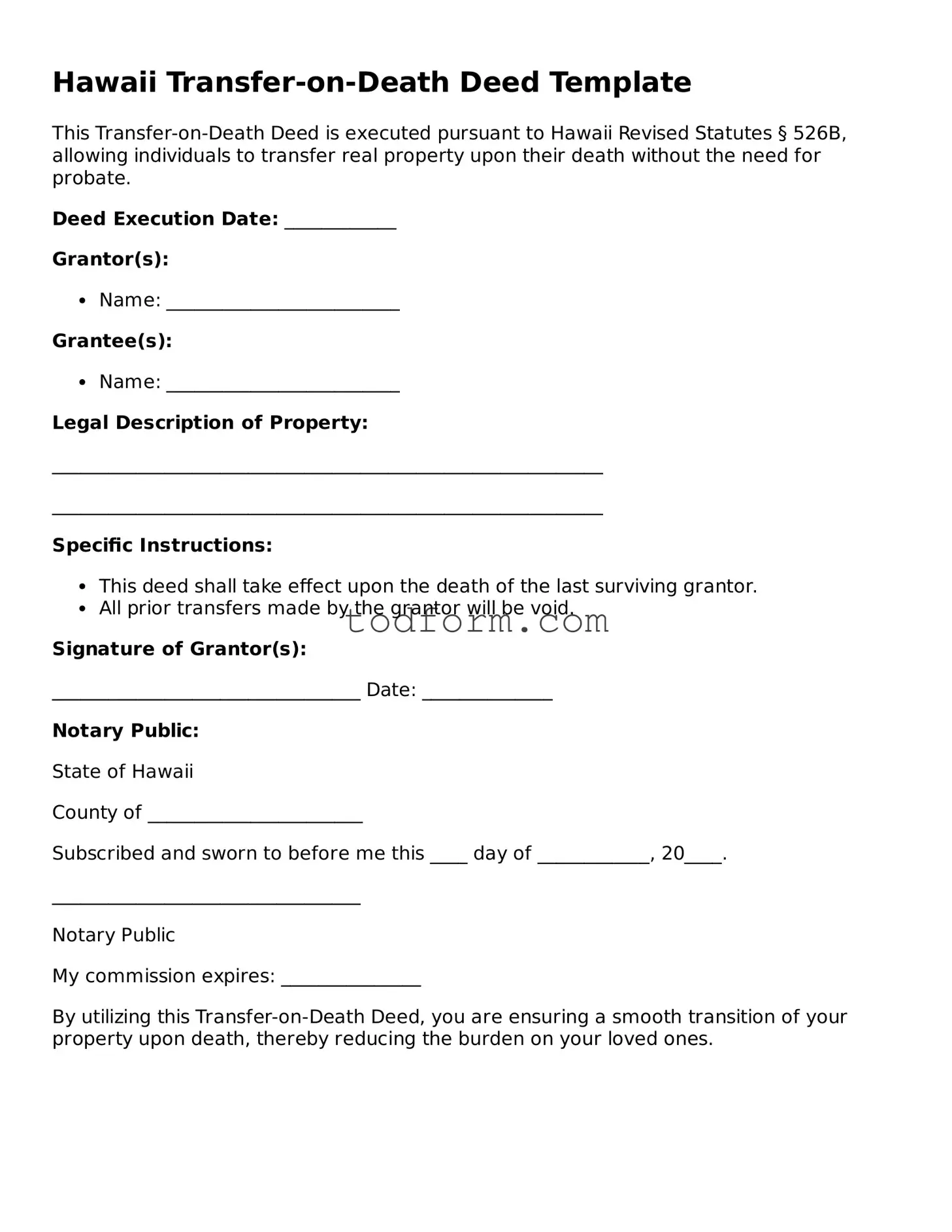Hawaii Transfer-on-Death Deed Template
This Transfer-on-Death Deed is executed pursuant to Hawaii Revised Statutes § 526B, allowing individuals to transfer real property upon their death without the need for probate.
Deed Execution Date: ____________
Grantor(s):
- Name: _________________________
Grantee(s):
- Name: _________________________
Legal Description of Property:
___________________________________________________________
___________________________________________________________
Specific Instructions:
- This deed shall take effect upon the death of the last surviving grantor.
- All prior transfers made by the grantor will be void.
Signature of Grantor(s):
_________________________________ Date: ______________
Notary Public:
State of Hawaii
County of _______________________
Subscribed and sworn to before me this ____ day of ____________, 20____.
_________________________________
Notary Public
My commission expires: _______________
By utilizing this Transfer-on-Death Deed, you are ensuring a smooth transition of your property upon death, thereby reducing the burden on your loved ones.
